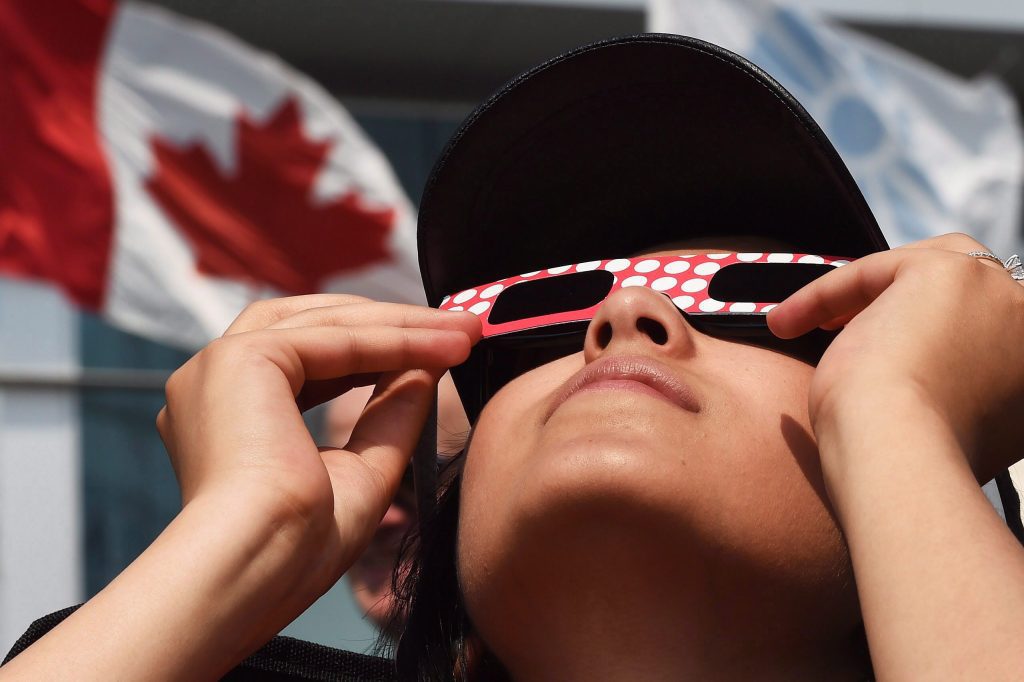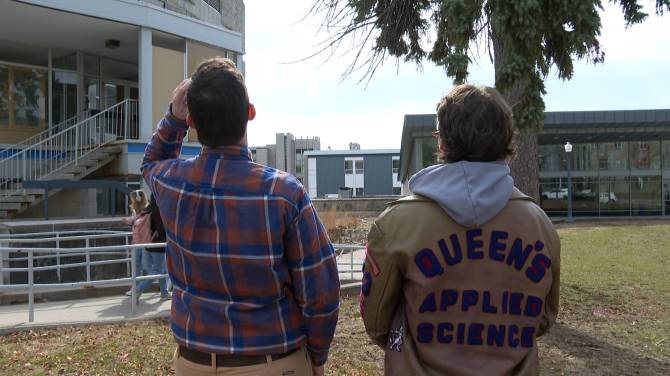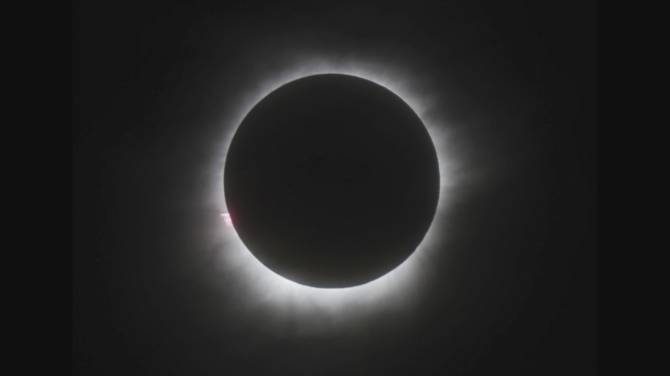These days, Mylene Gamache-Tremblay spends her evenings and weekends taking orders for solar eclipse glasses, and packing and shipping them around the eastern part of the country.
The Montreal-area online toy retailer says fulfilling orders is taking up every waking moment: “All of it. Every living hour.”
Eclipse glasses are a hot commodity in large parts of Eastern Canada, much of which will be in the path of a rare solar eclipse on April 8. But as the date approaches, demand for glasses is eclipsing supply, and experts are warning Canadians to act soon to ensure they can view the rare celestial event without risking eye damage.
Gamache-Tremblay, who in addition to her regular job owns online educational and science toy store Funique, says she originally ordered a single box of glasses to sell at about $5 each. Since then, she’s had to reorder nearly 10 times, and she isn’t sure whether her supplier will continue to have enough in stock.
Other retailers, however, are already selling out.
The Royal Astonomical Society of Canada, for example, hasn’t had eclipse glasses for sale online since mid-February. Executive director Jenna Hinds says the organization ordered about 50,000 last year, and another 25,000 this year. While it has saved some to sell in person, Hinds says they could have probably ordered several times more.
“Eclipses — especially total eclipses — coming through Canada don’t happen all that often,” Hinds said in a phone interview. “It seems to be a time-honoured tradition that glasses sell out along the eclipse path.”
The demand has led to concerns that people will order glasses that don’t offer true protection, or worse, try to rely on sunglasses or welding glasses. High demand during the 2017 partial solar eclipse led to “counterfeit and unsafe glasses” appearing on Amazon, according to the website of Discover the Universe, an astronomy training program offered by Canadian astronomers.
Hinds says it’s important that glasses meet the safety standard set by the International Organization for Standardization, blocking some 99.999 per cent of high-intensity visible light. Otherwise, people who look at the sun during an eclipse risk eye damage, ranging from “temporary spots in your vision to leaving you completely blind,” she said.
On the afternoon of April 8, Canadians who will experience totality — when the moon covers the sun completely — will be able to watch through their glasses as the sun shrinks to a sliver and then vanishes. For the few moments of totality it will be safe to remove glasses and watch with the naked eye.
NASA says totality in continental North America will begin on Mexico’s Pacific coast in the morning, before it crosses through the United States and into southern Ontario, Quebec, New Brunswick, Prince Edward Island, and Cape Breton, before it exits the continent on the Atlantic coast of Newfoundland at 5:16 p.m. local time.
Hinds suggests using websites such as Discover the Universe or Éclipse Québec to find retailers selling certified glasses.
She mentions that many schools already have the glasses ready to give out, and some stores or science groups are selling them in person even when they're sold out online. Organizations hosting eclipse viewings will also be giving them away for free in many cases, but supplies will be limited.
Hinds says the excitement for the eclipse overall has been huge, with some viewing events selling out very quickly.
She advises to plan ahead. Make sure you know where you want to go to see the eclipse, and make sure you have your glasses.
She recommends ordering the glasses now if you don't have them yet.





